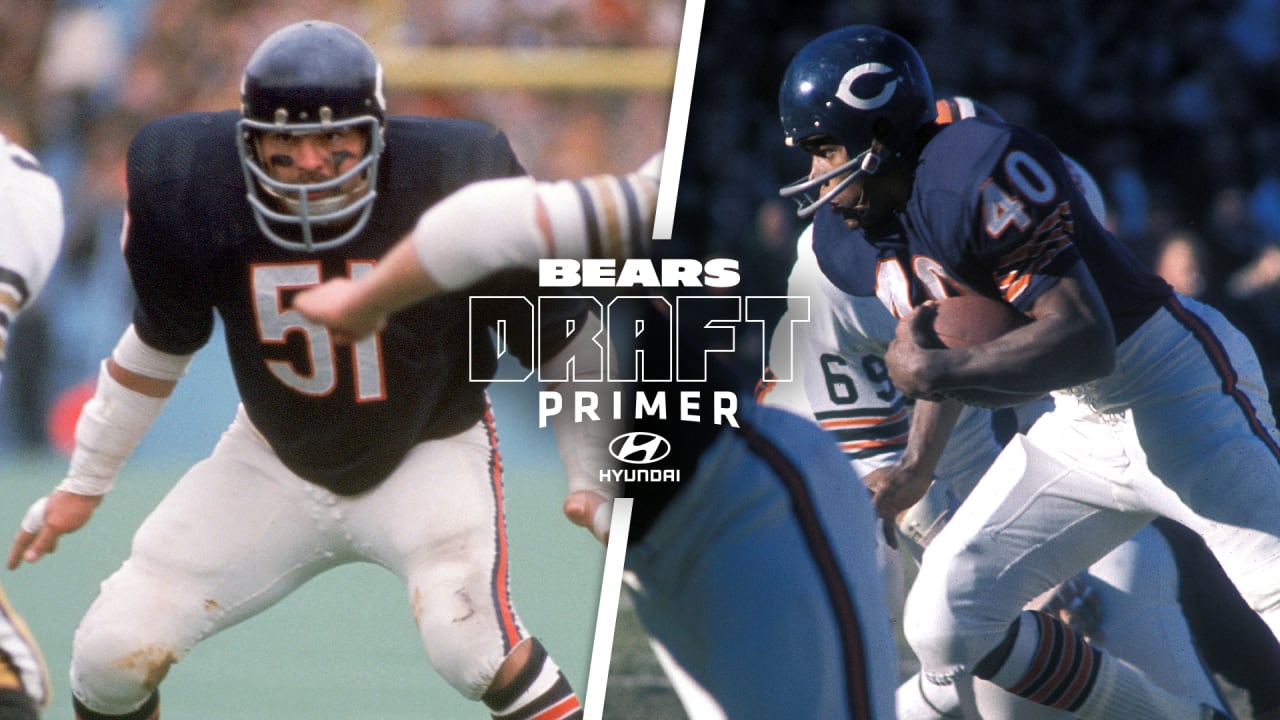Staley Da Bear
Well-known member
- Mar 16, 2019
- 2,085
- 0

Their brilliant careers were shortened by knee injuries, but Butkus and Sayers both ultimately were inducted into the Pro Football Hall of Fame. They even stood side-by-side when the Bears retired their numbers during a Monday night game against the Packers in 1994.
With the first pick in the 1965 draft, the Giants considered Butkus before choosing Auburn's Tucker Frederickson "because he is the best all-around fullback in the country," Giants vice president Wellington Mara said at the time.
After the 49ers selected North Carolina running back Ken Williard, the Bears chose Butkus third with a pick they had acquired in a trade with the Steelers and Sayers fourth with the selection they had received after finishing 5-9 in 1964.
After the Cowboys drafted California quarterback Craig Morton fifth overall, the Bears chose Tennessee defensive lineman Steve DeLong at No. 6 with a pick they had acquired from the Redskins.
"As far as we're concerned, we got the No. 1, 2 and 3 college football players in the country," Bears president George "Mugs" Halas Jr., the son of the legendary Bears founder and owner, said at the time. "We would have been happy if two of the three had been left for us."
"It was like holding an idiot's hand in gin rummy," said another staff member.
DeLong opted to sign with the rival American Football League and played his first seven pro seasons with the Chargers before finally joining the Bears for one year in 1972.
Chicago's other two first-round picks, however, became immediate stars.
Sayers, who set an NFL record with 22 touchdowns and tied another mark by scoring six TDs in a remarkable performance against the 49ers, edged Butkus for rookie of the year honors.
Sayers came to the Bears after starring at the University of Kansas. In Sayers, the Bears were hoping that they had drafted a breakaway successor to the late Willie Galimore, a star running back who had been killed in an automobile accident the previous summer at training camp.
"I've looked at Sayers in 12 games and he has some moves that even Willie didn't," Bears assistant coach George Allen said at the time. "And he's a track man, too; a hurdler. This is an indication that he has something more than just straight-ahead speed."
Kansas athletic director Wade Stinson told the Chicago Tribune that "Sayers is the best broken field runner I've ever seen. He'll show you moves you haven't seen yet."
Forced to retire after a second knee injury, Sayers set 23 club records and seven NFL marks during seven seasons with the Bears. He was selected to five Pro Bowls and was named offensive MVP in three of the all-star games.
In 1977, at the age of 34, Sayers became the youngest man ever inducted into the Hall of Fame. His effective playing time is also the shortest of any Hall of Famer.
Butkus was voted to the Pro Bowl in each of his first eight NFL seasons. He was also selected as an All-Pro in seven of his nine years with the Bears. Butkus was inducted into the Hall of Fame in 1979 in his first year of eligibility.
"If I had a choice, I'd sooner go one-on-one with a grizzly bear," Packers running back MacArthur Lane once said. "I pray that I can get up after every time Butkus hits me."
A Chicago native who was an All-American linebacker at the University of Illinois, Butkus recovered 25 fumbles during his career, which was an NFL record when he retired.
The Bears' 1965 draft class also included seventh-round receiver Dick Gordon, who was voted to back-to-back Pro Bowls in 1970-71. In 1970, he led the NFL with 71 receptions and 13 touchdown catches while compiling 1,026 yards.
Gordon spent his first seven NFL seasons with the Bears, appearing in 97 games with 81 starts. He ranks third on the franchise's all-time receiving list with 35 touchdowns, 11th with 3,524 yards and 13th with 238 catches.
Eleventh-round defensive tackle Frank Cornish played his first four NFL seasons with the Bears, appearing in 83 games with 37 starts. The Grambling State product started all 14 contests in 1967.
The Bears' final pick in the 1965 draft, 20th-round running back Ralph Kurek, played his entire six-year NFL career in Chicago. Kurek appeared in 81 games with 12 starts, rushing for 434 yards and two TDs on 121 carries and catching 26 passes for 299 yards. Primarily a backup on offense, he excelled on special teams, especially covering punts and kickoffs.
Bears 1965 draft class
1-3: Dick Butkus, MLB, Illinois
1-4: Gale Sayers, RB, Kansas
1-6: Steve DeLong, DE, Tennessee
4-45: Jim Nance, RB, Syracuse
6-73: Tony Carey, RB, Notre Dame
7-88: Dick Gordon, WR, Michigan State
7-90: Mickey Sutton, DB, Auburn
8-101: Brian Schweda, DE, Kansas
9-116: Ken Ambrusko, RB, Maryland
10-129: Dennis Murphy, DT, Florida
11-144: Frank Cornish, DT, Grambling State
12-157: Steve Cox, T, South Carolina
13-172: Dave Daniels, DT, Florida A&M
14-185: Dave Pivec, TE, Notre Dame
15-200: Art Robinson, RB, Los Angeles State
16-213: Frank Pitts, WR, Saginaw Valley State
17-228: Tom LaFramboise, QB, Louisville
18-241: Mike Schwager, T, Northwestern
19-256: Lou Bobich, K, Michigan State
20-269: Ralph Kurek, RB, Wisconsin
